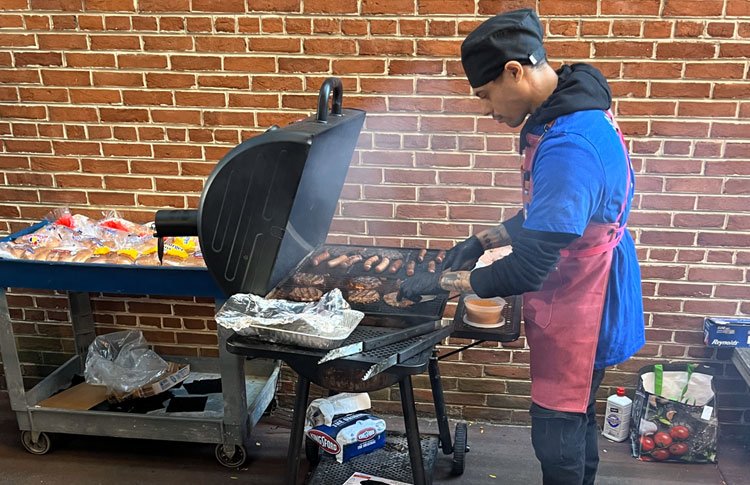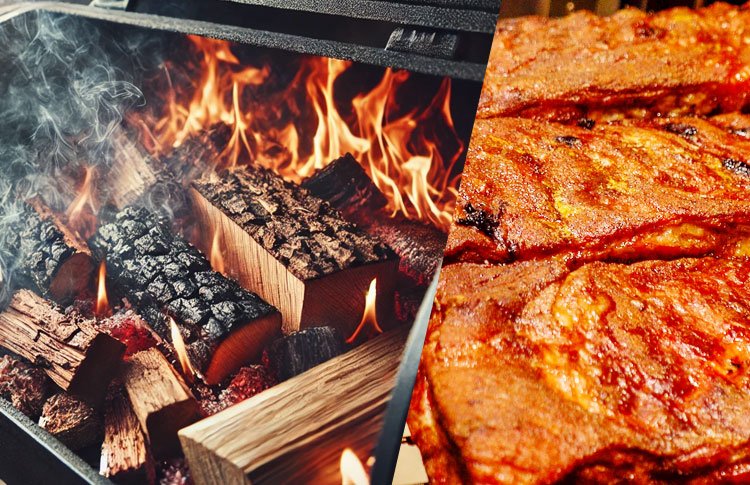Choosing the Best Wood for BBQ Smoking: Insights from Southern Flames
Wood selection holds the secret to exceptional BBQ. Different woods create unique flavor profiles that enhance your meat's taste. Hickory, the "King of smoking woods," delivers a sweet to strong flavor that elevates pork and beef, while oak's subtle vanilla-tinged taste has become authentic BBQ's signature mark. Southern Flames BBQ restaurant has become skilled at wood selection for smoking on northwest Philadelphia's Germantown Avenue. Our team knows alder wood creates a delicate, sweet smoke especially when you have poultry and fish to prepare. Mesquite produces an intense savory flavor that works perfectly with quick-cooking cuts like steak.
These authentic Southern BBQ flavors come alive through careful wood selection and expert smoking techniques that transform ordinary cuts into tender brisket and perfectly smoked ribs.
Understanding BBQ Smoking Woods
Southern Flames BBQ believes wood selection is the foundation of great smoking. Hardwoods are the life-blood of BBQ smoking because they burn slowly and have high density. On top of that, these woods contain compounds that naturally preserve food during smoking with their antibacterial properties.
The smoking process relies on three materials: cellulose, hemicellulose, and lignin. Lignin is vital in BBQ flavoring. Its phenols and hydroxyl groups work together to improve the meat's taste.
Mild Woods:
- Alder and fruitwoods (apple, cherry)
- Perfect for delicate meats like chicken and fish
- These woods add subtle sweetness without overwhelming natural flavors
Medium Woods:
- Oak and hickory are the stars here
- Oak gives balanced smokiness
- Hickory creates a rich, bacon-like flavor
- These work best with pork and beef cuts
Heavy Woods:
- Mesquite leads this category
- Prominent for its intense, earthy flavors
- Works best in short smoking sessions
Moisture content affects smoke quality by a lot. We pick wood with balanced moisture levels at Southern Flames. This helps avoid quick burning from dry wood and excess smoke from wet wood. We never use softwoods like pine and cedar. Their high resin content creates unpleasant and potentially harmful smoke.
Our Philadelphia location's experience shows that oak is great for smoking beginners. Hickory works well with meats of all types, but you need to watch the portions to avoid bitter flavors. We like to mix different woods - cherry with hickory is one combination that's become our signature Southern BBQ flavor.
BBQ enthusiasts learning at home should note that smoke can overpower other flavors quickly. Start with one chunk of wood and add more as you find your ideal smokiness level. This method has worked well for both our restaurant and catering services throughout Philadelphia.

Top Woods for Different Meats
Our team at Southern Flames BBQ has found that there was magic in matching the right wood with specific meats. Years of experience taught us how to pick woods that boost each meat's natural taste.
Oak is our top pick for beef brisket. It gives off a medium-strong, rich smoke that matches the meat's strong character. Hickory makes a great choice too, adding a bold, bacon-like aroma that brings out the brisket's natural flavors.
Fruit woods work best with pork, especially ribs, because of their sweet undertones. Apple wood brings a mild, fruity essence that pairs perfectly with pork cuts. Cherry wood adds just the right touch of complexity and works great with both pork and poultry.
Chicken lovers who visit us in Philadelphia should try our maple wood-smoked chicken dishes. The sweet and earthy profile is simply amazing. Pecan wood also creates a rich and buttery flavor that goes exceptionally well with chicken.
Fish needs a gentle touch. We use alder wood because it's sweet and mild. Some customers want stronger flavors, so we blend hickory with applewood. This mix creates a balanced smoky-sweet taste that complements seafood perfectly without overwhelming it.
Here's our proven guide for wood intensity levels:
- Mild Woods: Alder and fruit woods (apple, cherry) - Perfect for fish and poultry
- Medium Woods: Oak and pecan - Ideal for pork and beef
- Strong Woods: Hickory and mesquite - Best for robust cuts like brisket
Experience taught us something crucial at Southern Flames: heavy meats like beef and pork need heavy hardwoods such as oak and hickory. Lighter woods go better with delicate meats to keep flavors balanced.
BBQ catering customers in Philadelphia benefit from knowing these wood-meat combinations. We create unique flavor profiles by mixing different woods - hickory with apple or oak with cherry. These combinations have become the hallmark of our authentic Southern BBQ offerings.

Professional Wood Smoking Tips
Our years at Southern Flames BBQ taught us that smoke management is the lifeblood of exceptional barbecue. A small, steady-burning fire consistently produces the best smoke quality. Proper airflow is vital—you need to keep both inlet and exhaust dampers slightly open to get optimal combustion.
Traditional offset smokers use wood as their main heat source. We suggest keeping temperatures between 225°F and 250°F. The best smoke looks almost invisible and has a pale blue tint. Pitmasters call this blue smoke their holy grail because it contains particles smaller than a micron.
These tips will help you achieve perfect smoke:- Fire Management: Build a small, hot fire that burns at 650-750°F in the hot spots to eliminate impurities. Your exhaust vent should stay fully open to pull in enough oxygen through the intake vent.
- Wood Preparation: Don't soak wood chunks - it just delays ignition. Use properly dried hardwood with 25-30% moisture content. Golf ball to baseball-sized chunks work best for long smoking sessions.
We've seen at Southern Flames that gray soot on your meat shows your burning coals need more oxygen. You can wash this soot off and adjust the oxygen flow before you continue. Regular ash removal stops your coals from getting smothered.
BBQ smoking newcomers should do several 'dry runs' without food. This practice helps you become skilled at temperature control and understand the right time to add wood for the best smoke.
A significant lesson from our Philadelphia kitchen: stay away from softwoods like pine or cedar. They have too much sap and terpenes that can make your food unsafe. If your wood smells musty, that smell will stay during cooking and end up affecting your final product.
Southern Flames BBQ delivers authentic Southern flavors to our Philadelphia community by paying attention to these basics. Our steadfast dedication to proper smoke management will give a perfect kiss of smoke to every dish that leaves our kitchen - just like our customers expect.
